Loss of linker histone H1 in cellular senescence
- PMID: 17158953
- PMCID: PMC2064697
- DOI: 10.1083/jcb.200604005
Loss of linker histone H1 in cellular senescence
Abstract
Cellular senescence is a tumor-suppressing mechanism that is accompanied by characteristic chromatin condensation called senescence-associated heterochromatic foci (SAHFs). We found that individual SAHFs originate from individual chromosomes. SAHFs do not show alterations of posttranslational modifications of core histones that mark condensed chromatin in mitotic chromosomes, apoptotic chromatin, or transcriptionally inactive heterochromatin. Remarkably, SAHF-positive senescent cells lose linker histone H1 and exhibit increased levels of chromatin-bound high mobility group A2 (HMGA2). The expression of N-terminally enhanced green fluorescent protein (EGFP)-tagged histone H1 induces premature senescence phenotypes, including increased levels of phosphorylated p53, p21, and hypophosphorylated Rb, and a decrease in the chromatin-bound endogenous histone H1 level but not in p16 level accumulation or SAHF formation. However, the simultaneous ectopic expression of hemagglutinin-tagged HMGA2 and N-terminally EGFP-tagged histone H1 leads to significant SAHF formation (P < 0.001). It is known that histone H1 and HMG proteins compete for a common binding site, the linker DNA. These results suggest that SAHFs are a novel type of chromatin condensation involving alterations in linker DNA-binding proteins.
Figures

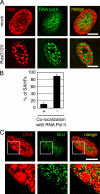
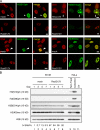
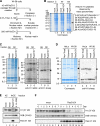
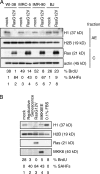


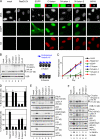
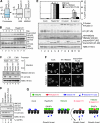
References
-
- Braig, M., and C.A. Schmitt. 2006. Oncogene-induced senescence: putting the brakes on tumor development. Cancer Res. 66:2881–2884. - PubMed
-
- Bustin, M., F. Catez, and J.H. Lim. 2005. The dynamics of histone H1 function in chromatin. Mol. Cell. 17:617–620. - PubMed
-
- Campisi, J. 2005. Senescent cells, tumor suppression, and organismal aging: good citizens, bad neighbors. Cell. 120:513–522. - PubMed
-
- Cremer, T., and C. Cremer. 2001. Chromosome territories, nuclear architecture and gene regulation in mammalian cells. Nat. Rev. Genet. 2:292–301. - PubMed
Publication types
MeSH terms
Substances
LinkOut - more resources
Full Text Sources
Other Literature Sources
Molecular Biology Databases
Research Materials
Miscellaneous

